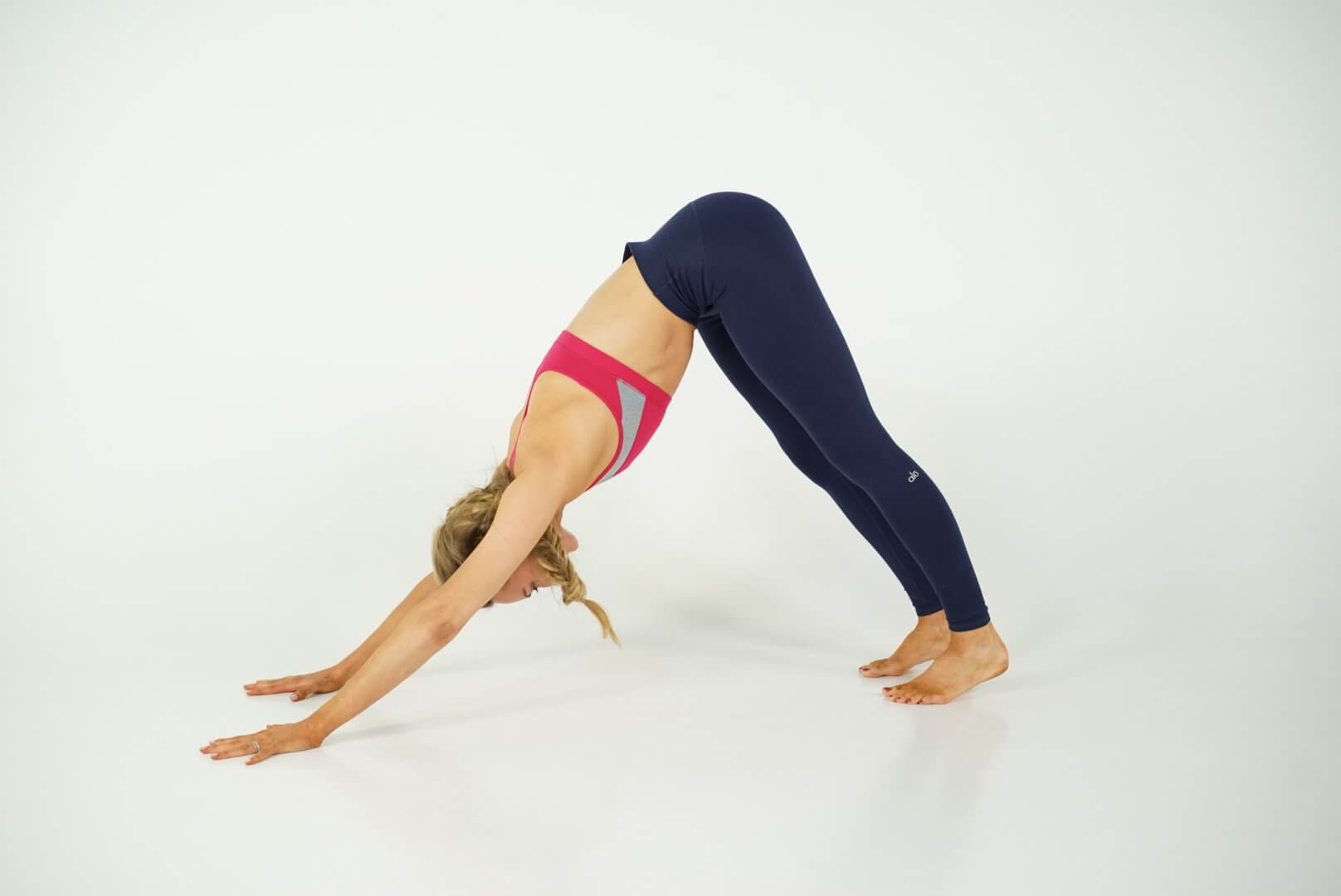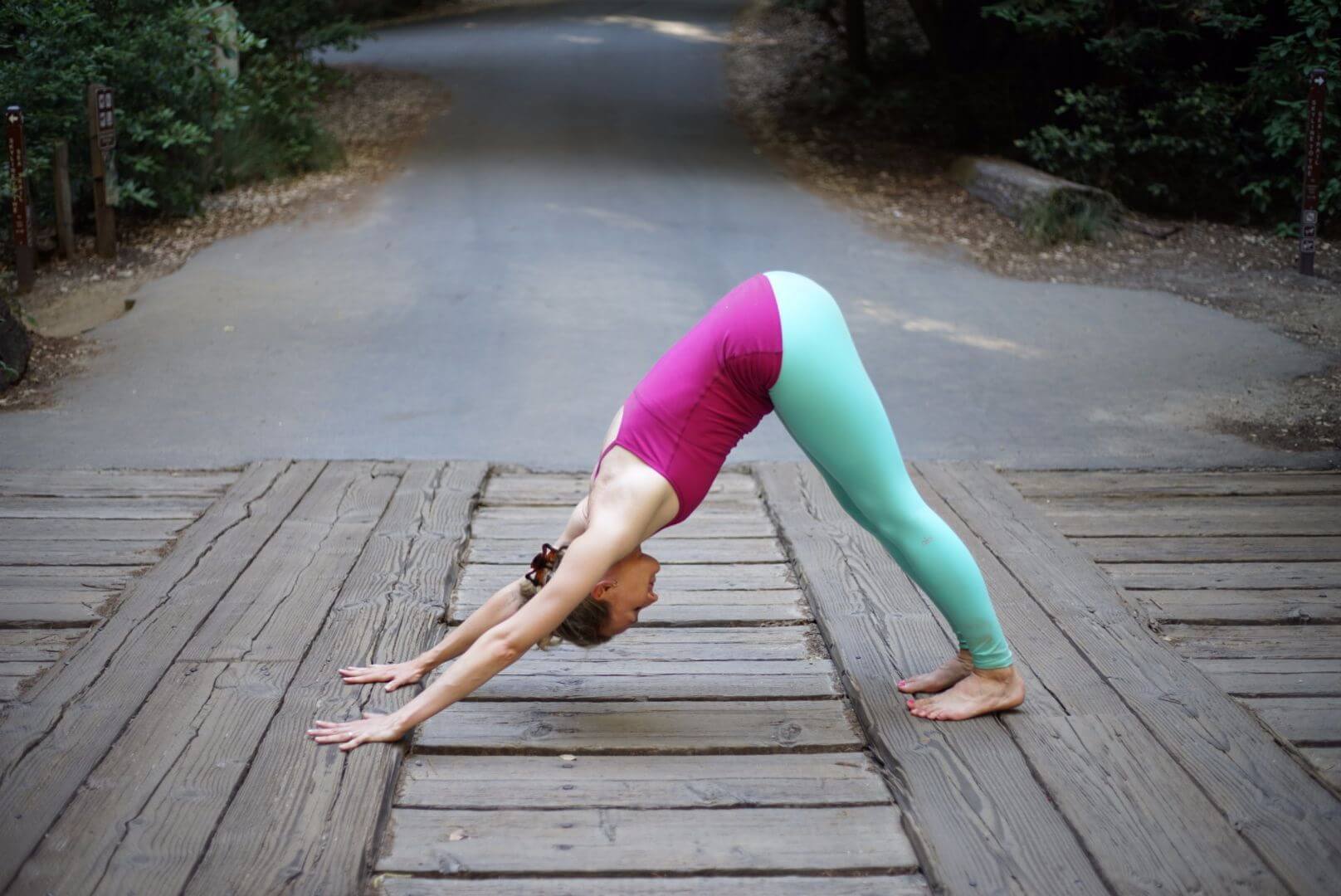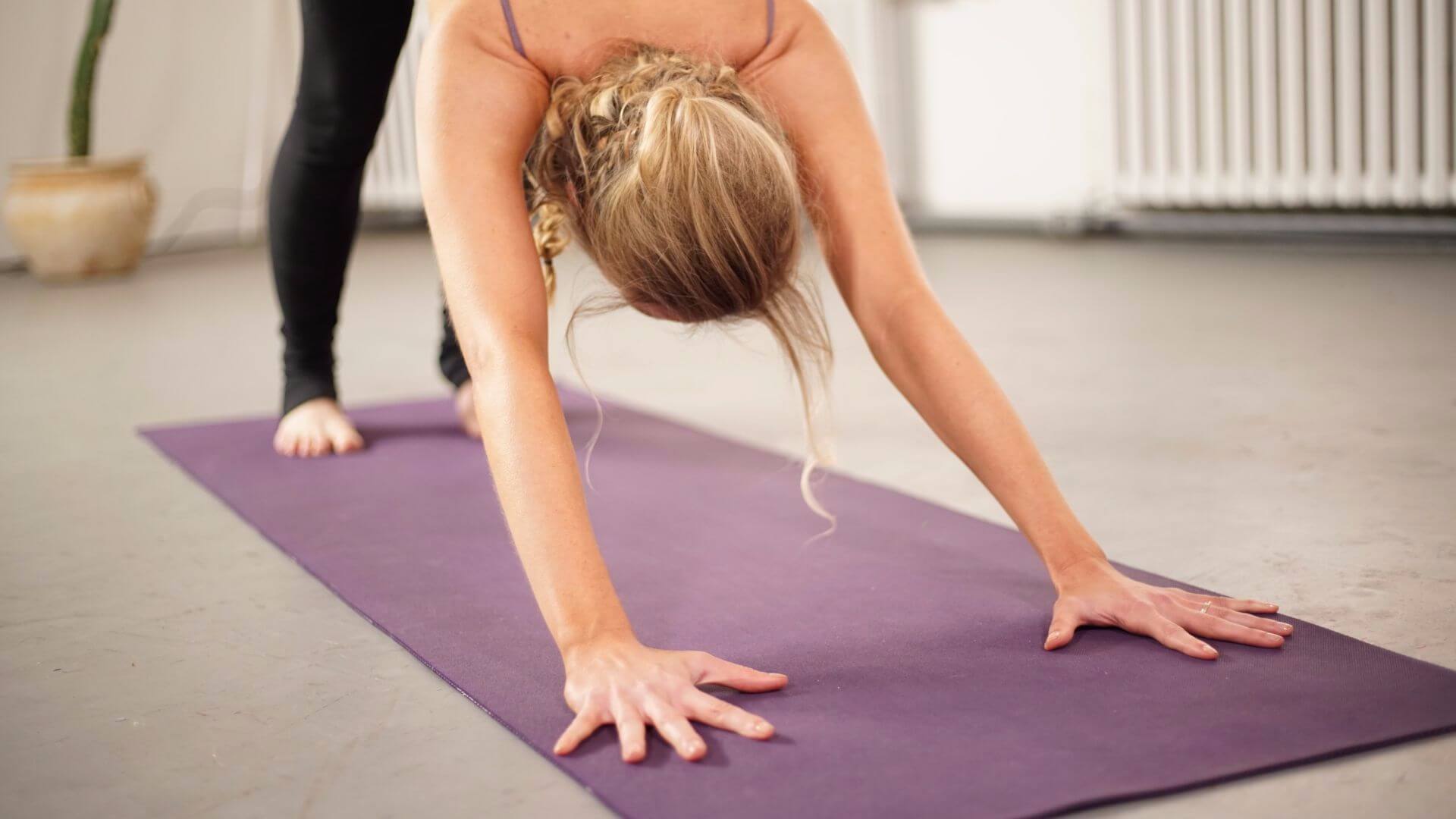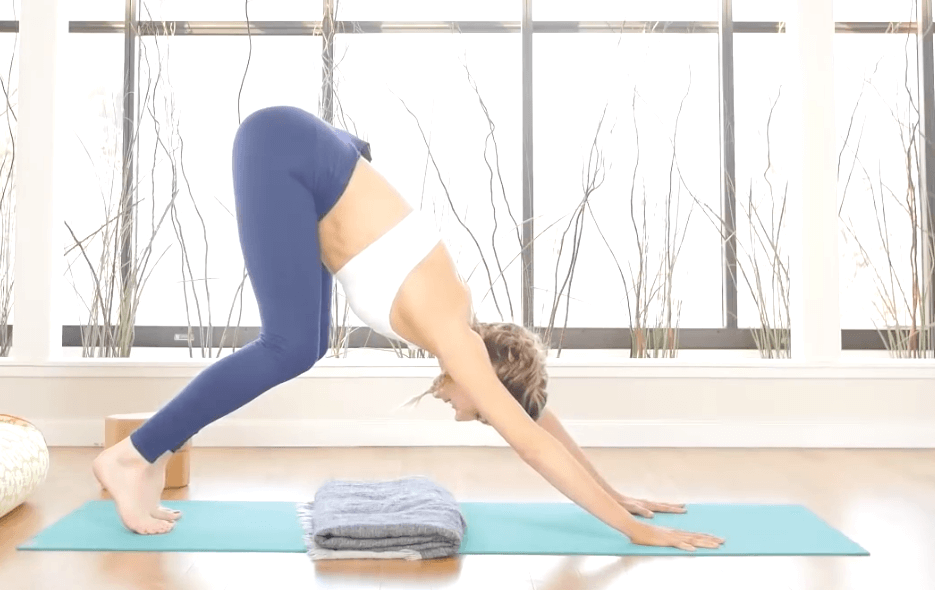(Adho Mukha Svanasana): Techniques, Benefits, Variations

Downward Dog Pose Prep & Practice
1
Beginning on hands and knees, knees stacked under hips, hands slightly forward of shoulders. Low abs draw up and in, toes curl under.
2
Spread fingers, pressing down through knuckles. On an inhalation, lift sits bones toward the ceiling, lengthen legs and press thighs and ankles up and back.
3
Feet hip width apart (or wider), heels yearn back and down. Thighs are in neutral rotation, muscles engaged. Pelvis is neutral, pubic bone and tailbone draw up and back. Abdominals draw up and in, creating even length in the front, sides and back of torso.
4
Weight is evenly distributed across knuckles of hands. Forearms rotate internally as upper arms rotate externally, shoulders soften away from ears. Ears in line with biceps, jaw relaxed, breath is steady.
5
To come out of the pose, on an exhalation, lower knees and rest in Child’s Pose (Balasana)



Variations/Modifications
- Bend knees
- Feet mat width apart
- Use wedges or blocks underhands (wrist injury)
- Use fists instead of spreading hands (wrist injury)
- Widen arms and/or bend elbows (shoulder injury)
- Block between thighs
- Puppy Pose or Tabletop
Physical, Mental and Emotional Benefits
- Stretches hamstrings and lower back
- Opens shoulders
- Soothes headaches, reduces blood pressure
- Creates space between vertebrae in spine
- Calms the brain and relieves stress
Contraindications
- Acid Reflux
- Shoulder, Wrist or Neck Injuries (see modifications)
- Glaucoma or Retinal Problems
- Very Low Blood Pressure
Thoughtful Sequencing
Cow and Cat (Bitilasana and Marjaryasana), Child’s Pose (Balasana), Cow and Cat (Bitilasana and Marjaryasana), Downward Facing Dog (Adho Mukha Svanasana) pedaling the legs, bending one knee at a time before settling into stillness, Rest in Child’s Pose (Balasana).
A Few Notes
No matter what level of experience you have, downward dog pose, often called ‘down dog’, is an important posture in everyone’s yoga practice. It is one of those postures that links together all others in a yoga sequence, allowing you to easily transition from the ground, such as in child’s pose, to standing poses, such as Warrior 1 or 2.
It is also a core posture in the sun salutation yoga sequence, making it one of the most-used asanas in modern-day yoga practice.
In a more traditional yoga practice, this posture is associated with the Root Chakra as it is an incredibly grounding asana.
Though many yoga teachers treat this posture like a resting pose, down dog can be a very active posture. When in proper alignment, downward facing dog pose builds upper body strength, increases flexibility, and stretches the lumbar spine.
To really focus on correct alignment, begin by ensuring that your hands are shoulder width apart and pressing your index finger and middle finger of each hand firmly into the yoga mat. Roll your inner arms toward each other and move your shoulder blades down your back toward the base of your spine. Engage the muscles in your upper arms to protect the shoulder joint and check that your shoulder is not touching your earlobe.
Keep your upper body firm, using your abdominal muscles to maintain a straight spine. Lift your sit bones up toward the sky to lengthen the back of your legs.
If you have tight hamstrings, this can be especially challenging and you may not be able to maintain straight legs or touch your heels to your yoga mat. That’s okay!
If that’s the case, you can gently pedal each leg, gently touching one heel to the ground while bending the other leg deeply. Switch sides and repeat this motion to loosen the calf muscles and tight hamstrings.
If this is too challenging for you, don’t overdo it. One of the dangers in downward facing dog pose is that many yogis push themselves too far without correct alignment. If your shoulder blades, calf muscles, or hip flexors are too tight for this posture, then you can try some modifications to make it more accessible to you. One of my favorite ways to open up my shoulder blades in preparation for down dog is to put my hands on the wall and bend my body into a 90-degree angle. This helps open up the shoulder area and the upper arms without risking overstretching or injury.
If you have pain in your wrist due to carpal tunnel syndrome or a previous injury, then you can always place a folded blanket under the heel part of your hands.
Some poses to help you prepare for this advanced asana are:
Try Downward Dog Pose On The Blog
Want more yoga pose tutorials? See more in my Yoga Pose Directory.
Learn how to do 11 of the most popular yoga poses correctly. Free video + PDF download.









